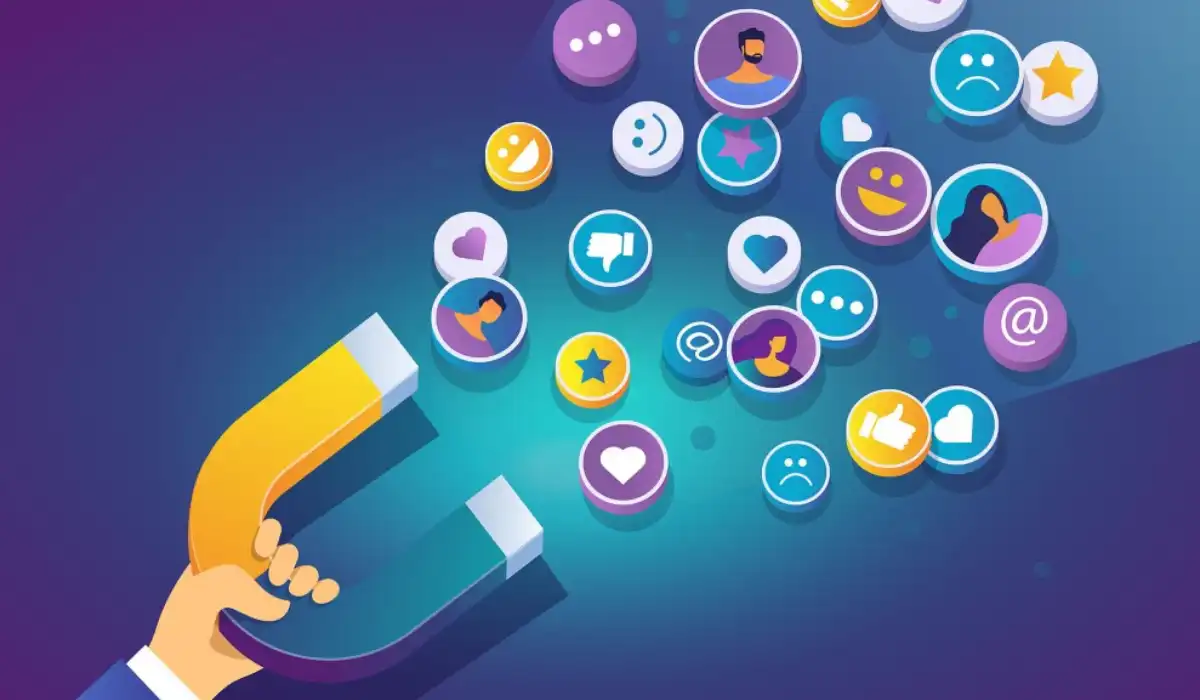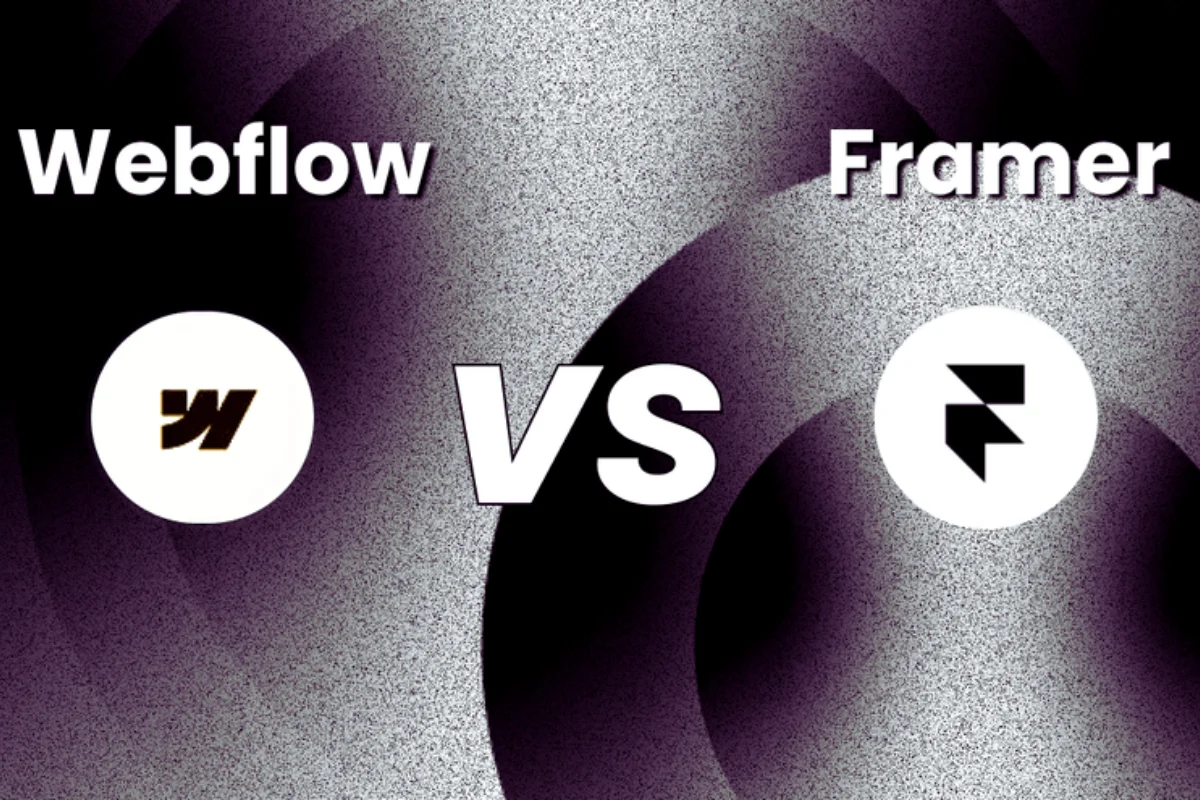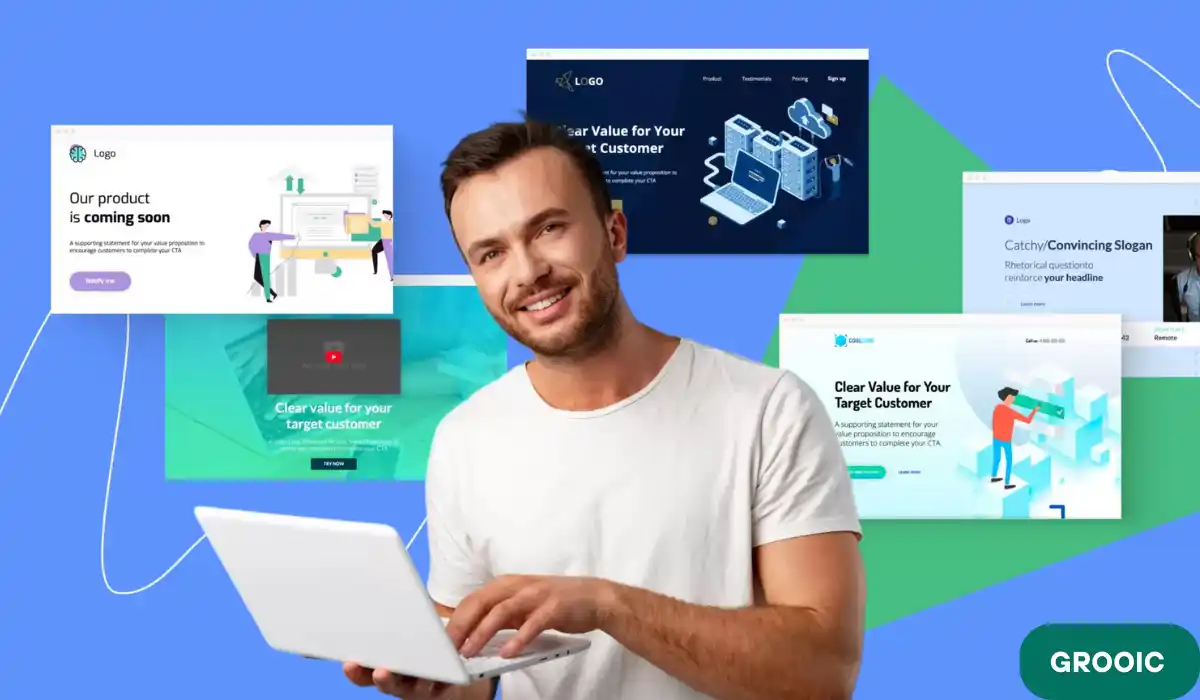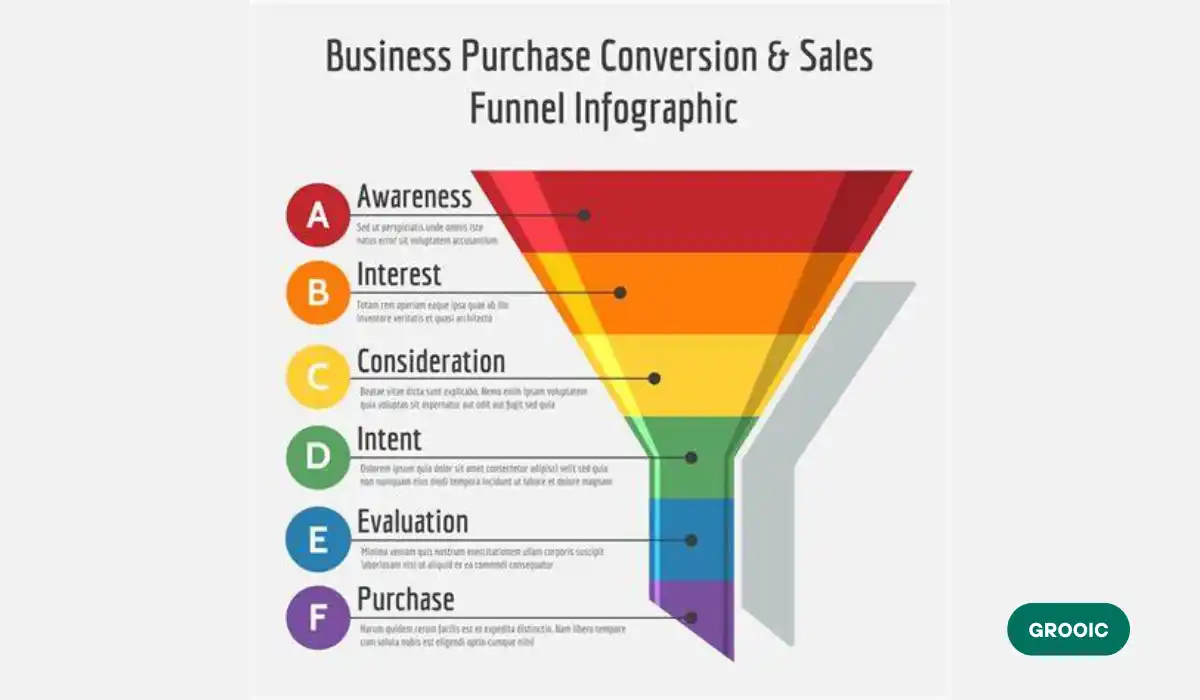Looking to boost your business’s customer engagement?
What if you could transform casual interactions into meaningful connections that keep customers coming back?
Here Grooic explores creative and effective customer engagement ideas that can improve your brand engagement and sales. Ready to know different strategies that truly work?
Table of Contents
Customer Engagement Activities
Customer engagement involves significant brand-customer interactions. Not only selling, but creating connections that lead to,
- Client loyalty,
- Repeat business, and
- Word-of-mouth marketing.
Here are the sorts of customer engagement activities and practical strategies, tips, and processes to maximize engagement.
Content Marketing Engagement
Content marketing is a top customer engagement method. Provide valuable, relevant, and consistent material to attract and maintain a certain audience.
Work to Do
- Blog posts and articles: Address audience pain areas, interests, and industry trends.
- Videos & webinars: Make brand-aligned educational or entertaining videos.
- Infographics: Complex information can be simplified using attractive infographics.
How to Do It
- Determine who your target market is and what attracts them.
- Create a content calendar to guarantee consistent publication.
- Make use of SEO strategies to raise awareness.
- Distribute your material on all social media networks.
Tricks and Processes
- Transform content into other formats (e.g. make a video out of a blog post).
- Tell stories in your material to increase reader engagement.
- To improve your approach, keep an eye on engagement indicators like likes, shares, and comments.
Analytical Output
When done well, content marketing can raise engagement by 60% (approximately).
Social Media Engagement
Social networking sites are the best for interaction in real-time. They let you create a community, share content, and communicate with customers directly.
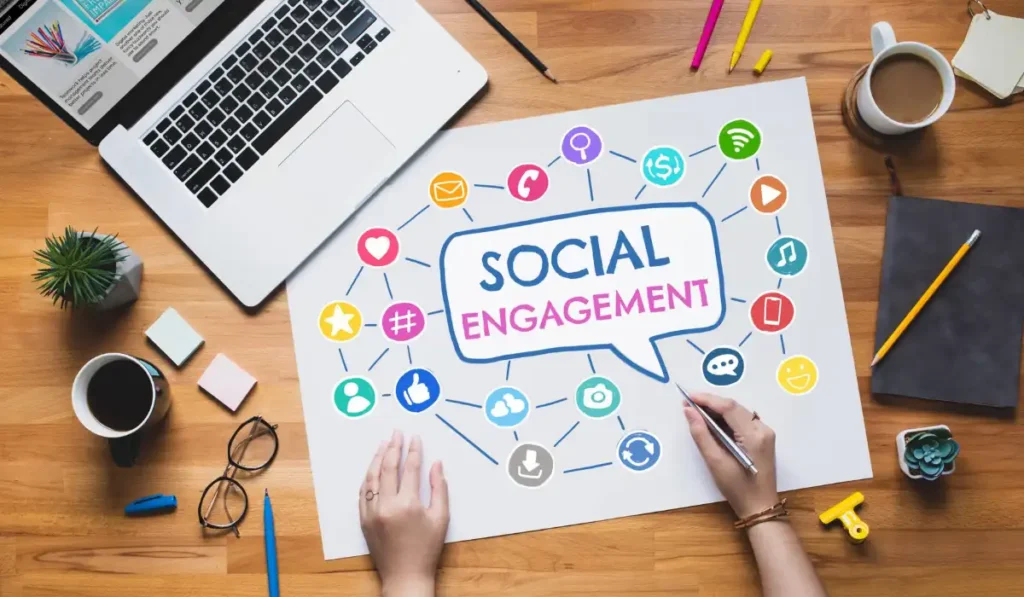
Work to Do
- Frequent posting: Distribute material, promotions, and updates on a regular basis. Use live videos, Q&A sessions, and polls in your interactive posts.
- Reacting to Comments: Interact with your followers by answering their messages and comments.
How to Do It
- Based on the demographics of your audience, select the appropriate platforms.
- Post when your audience is most engaged, for maximum effect.
- To expand your audience, use hashtags.
Tricks and processes
- To increase participation, provide freebies and competitions.
- Work together with influencers to increase your audience.
- Examine the post kinds that receive the greatest interaction, then try to imitate their approach.
Analytical Output
Customer interactions and brand recognition might rise by approximately 40% (approximately) as a result of social media involvement.
Email Marketing Engagement
A direct approach to reaching clients with updates, promotions, and tailored communications is through email marketing.
Work to Do
- Segment Your Audience: Put your email list into groups according to their purchasing history, demographics, etc.
- Personalized Emails: Write emails with the recipient’s name in the subject line and recommend products or relevant content.
- Automated Campaigns: Configure follow-up, onboarding, and abandoned cart email sequences.
How to Do It
- To handle campaigns, use email marketing platforms like HubSpot or Mailchimp.
- To determine what works best, try a variety of email formats and subject lines.
- Keep an eye on the conversion, click-through, and open rates.
Tricks and processes
- Send surveys and utilize the responses to shape your next email campaign.
- A/B testing can be used to improve email performance.
- Incorporate unambiguous calls-to-action (CTAs) into each email.
Analytical Output
Analytical Output: A 30% (approximately) rise in client engagement and conversion rates can be attained through effective email marketing.
Loyalty Programs
Loyalty programs encourage and reward loyal customers to continue interacting with your business.
Work to Do
- Point-based System: Accumulate points for each purchase, which can be exchanged for free or heavily discounted goods.
- Programs with tiers: Establish various award levels according to consumer expenditure.
- Exclusive Offers: Give loyalty members early access to new products or exclusive pricing.
How to Do It
- Make use of tools for loyalty programs such as Smile.io or LoyaltyLion.
- Inform clients on a regular basis about their point balance and possible prizes.
- Use social media and your website to advertise the loyalty program.
Tricks and processes
- Give out double points on holidays or during special promotions.
- Join forces with other companies to provide shared benefits.
- Establish a referral program as part of your loyalty program.
Analytical Output
Loyalty programs have the potential to raise total engagement by 35% and customer retention by 50% (approximately).
Community Building
Creating a community around your business contributes to your clients’ feeling of community.
Work to Do
- Online Forums: Let customers ask questions, share experiences, and give comments. This can be a Facebook group, Slack channel, or website forum.
- User-Generated Content: Encourage customers to post brand-related reviews, images, and videos. Promote this article on your website or social media to foster community pride.
- Activities: Bring your community together with online or offline activities. Webinars, Q&As, product debuts, and meet-and-greets are examples.
How to Do It
- Run your community on Facebook groups, Slack, or Discord. The platforms give capabilities to manage discussions, communicate information, and plan events.
- Regularly interact with members to maintain community. Replying, asking inquiries, or posting fresh content are examples.
- Give community members exclusive content or offers to make them feel special. This could include early product releases, discounts, or behind-the-scenes content.
Tricks and processes
- Top community members: Recognize and praise them. This might be shoutouts, badges, or exclusive prizes. Positive examples from active members can boost involvement.
- Calendar your content: Create regular posts, discussions, and events to engage the community. This keeps activity high and gives members something new to look forward to.
- Encourage members: To help each other by answering queries or giving advice. This reduces support staff workload and strengthens the community.
Analytical Output
Strong community development can enhance customer engagement by 45% (approximately) and brand loyalty by 50% (approximately).
Personalized Customer Service
Personalizing customer service means serving each customer individually. Engagement activities that develop trust and satisfaction are essential.
Work to Do
- Create detailed customer profiles with purchase history, preferences, and interactions.
- Make personalized product or service recommendations based on client data.
- Address customers by name and allude to earlier interactions when replying to inquiries.
How to Do It
- Use CRM software to handle customer data.
- Help your customer service team use this data.
- Keep customer profiles updated.
Tricks and processes
- AI and ML can automate tailored recommendations.
- Follow up with emails after purchases to solicit feedback or recommend products.
- Honor loyal customers with unique discounts.
Analytical Output
Personalized service can raise client satisfaction by 25% and repeat business by 20%.
Gamification
Gamification adds game-like features to consumer interaction. More interesting and fulfilling encounters can result.
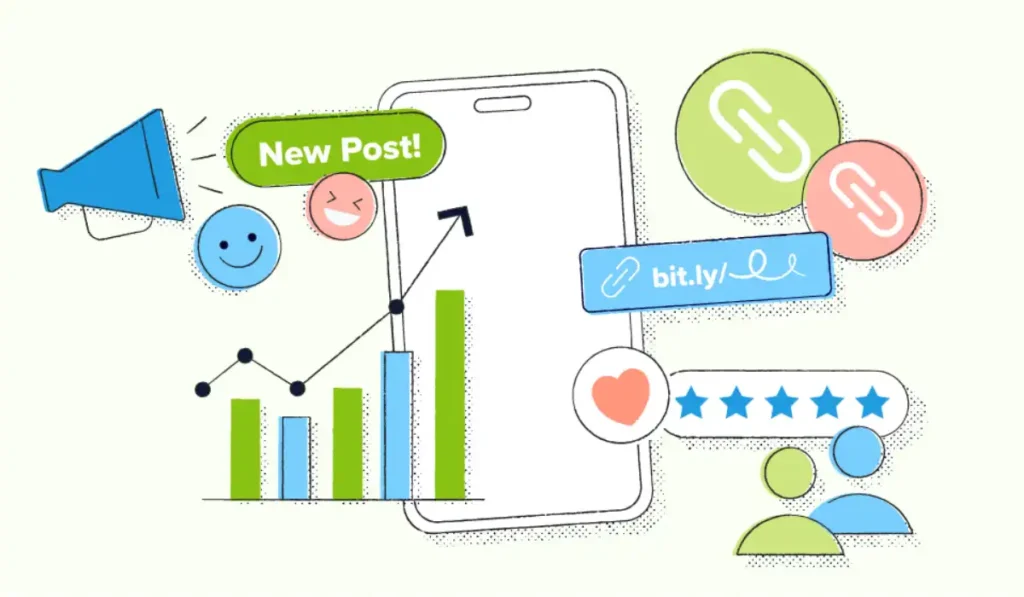
Work to Do
Use point systems to reward consumers for purchases, social media activities, or referrals. Offer badges or levels to acknowledge milestones or achievements.
Create challenges and contests to connect customers with your brand.
How to Do It
- Make use of gamification tools such as Badgeville or Bunchball.
- Update and publicize new tasks or methods for earning points on a regular basis.
- Make sure the incentives are worthwhile enough to inspire people to participate.
Tricks and processes
- To increase the efficacy of your loyalty program, incorporate gamification.
- Make use of social evidence by showcasing leaders or top participants.
- Make sure the game’s components are clear and basic.
Analytical Output
Gamification has the potential to enhance brand loyalty by 25% (approximately) and boost customer engagement by 30% (approximately).
Customer Feedback & Surveys
Actively seeking out client input demonstrates your appreciation for their thoughts and your dedication to enhancing your offerings.
Work to Do
- Send out surveys following encounters or purchases.
- Feedback Forms: Include feedback forms in emails or post them on your website.
- Social listening: Keep an eye out for brand mentions on social media to get uninvited input.
How to Do It
- Create and distribute surveys with the help of programs like SurveyMonkey or Google Forms.
- Examine the comments to find patterns and potential areas for development.
- As soon as possible, reply to consumer comments to demonstrate that you value their opinions.
Tricks & Processes
- Offer rewards for completing surveys, such as discounts or entrance into a drawing.
- For surveys to be completed, make them brief and direct.
- Inform clients on a regular basis of adjustments made in response to their input.
Analytical Output
Effective use of customer feedback can lead to a 15% increase in customer satisfaction and a 10% improvement in product/service quality.
Referral Programs
Referral programs use the power of word-of-mouth marketing to entice current customers to recommend new ones by providing rewards or incentives.
Work to Do
- Referral Offers: Establish a system of rewards, such as store credit, freebies, or discounts, to encourage customers to successfully refer others.
- Promotion: Make it simple for clients to find and share the referral program, and make it apparent how they can get involved.
- Tracking: Put in place a method to precisely track recommendations and guarantee that prizes are given out appropriately.
How to Do It
- Make use of software for referral programs such as Yotpo, Friendbuy, or ReferralCandy.
- Give clients detailed information on how to recommend others, along with shareable links or referral codes.
- Remind your clients about the referral program on a regular basis via emails, social media, and follow-up conversations.
Tricks & Processes
- Provide reciprocal incentives, such as a discount, so that the consumer who was referred and the referrer both gain from the arrangement.
- To promote quick involvement, incorporate the referral program into your customers’ post-purchase interactions.
- Showcase your referral program’s top referrers or success stories to create social proof.
Analytical Output
Referral programs have the potential to improve customer loyalty by 20% (approximately) and increase new client acquisition by 25% (approximately).
Customer Onboarding
The process of assisting new clients in utilizing your product or service is known as customer onboarding.
Customer satisfaction can rise and attrition can be decreased with a seamless onboarding process.
Work to Do
- Welcome Emails: Send a series of emails outlining important features, guiding prospective customers through the first steps, and extending a warm welcome.
- Tutorials & Demos: To assist clients in understanding how to utilize your product efficiently, offer video tutorials, webinars, or live demos.
- Support Resources: Make sure you have quick access to customer service, knowledge bases, and FAQs in case you have any queries or problems during the onboarding process.
How to Do It
- Create an automated onboarding process with email marketing platforms like as ActiveCampaign, HubSpot, or Mailchimp.
- Track each customer’s onboarding progress and get in touch with those who might want further help.
- Update and improve your onboarding materials frequently in response to statistics and consumer feedback.
Tricks & Processes
- Customize the onboarding process according to customer segments. For example, send first-time users and returning customers separate messages.
- To keep consumers interested throughout the process, use interactive materials like surveys or customized onboarding routines.
- In order to avoid irritation and lower churn, encourage customers to ask for assistance as soon as they need it.
Analytical Output
A well-run onboarding procedure can boost engagement by 15% (approximately) and decrease customer attrition by 20% (approximately).
Final Summary Table of Customer Engagement Activities
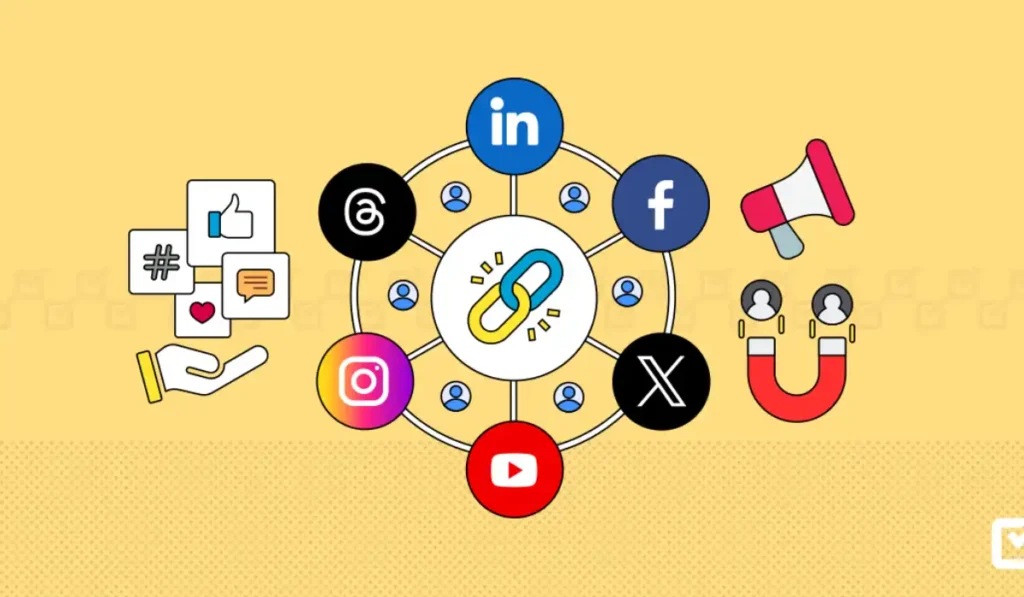
| Activity Type | Work to Do | How to Do It | Tricks & Processes | Analytical Output (approximately) |
| Content Marketing | Blog posts, videos, infographics | Identify audience, SEO, repurpose | Storytelling, monitor metrics | 60% increase in engagement |
| Social Media | Regular posts, interactive content | Choose platforms, optimal timing | Giveaways, influencer collaborations | 40% increase in interactions |
| Email Marketing | Segmented and personalized emails | Use email tools, A/B testing | Surveys, A/B testing, clear CTAs | 30% increase in conversions |
| Loyalty Programs | Point-based rewards, tiered offers | Use loyalty software, regular updates | Double points, referral programs | 50% increase in retention |
| Community Building | Online forums, events, user-generated content | Use social platforms, engage regularly | Shoutouts, feedback loops | 45% boost in engagement, 50% loyalty |
| Personalized Customer Service | Customer profiles, tailored communication | CRM software, team training | AI recommendations, follow-up emails | 25% increase in satisfaction, 20% repeat business |
| Gamification | Points, badges, challenges | Gamification software, promote updates | Social proof, simple game elements | 30% increase in engagement, 25% brand loyalty |
| Customer Feedback & Surveys | Surveys, feedback forms, social listening | Survey tools, analyze feedback | Incentives, short surveys, prompt responses | 15% increase in satisfaction, 10% quality improvement |
| Referral Programs | Referral offers, promotion, tracking | Referral software, clear instructions | Double-sided rewards, social proof | 25% increase in new customers, 20% loyalty improvement |
| Customer Onboarding | Welcome emails, tutorials, support resources | Automated sequences, monitor progress | Personalization, interactive content, early support | 20% reduction in churn, 15% engagement increase |
To maximize conversions, focus on optimizing your website’s:
- User experience,
- Streamlining the checkout process, and
- Employing targeted marketing strategies that address your audience’s specific needs and interests.
Customer Engagement Plan Example
Integration of Customer Engagement Strategy examples and procedures is needed to keep customers interested, satisfied, and loyal to your brand. A good plan improves client retention and experience.
We will discuss a multifaceted plan that uses all the essentials to keep clients engaged with your company below.
Client Engagement Strategies
Maintaining client engagement processes with client relationships requires effective client engagement techniques.
These tactics should be customized for your clients.
- Personalized contact,
- Regular check-ins, and
- Exclusive offers can make customers feel valued.
Use these tactics to build long-term relationships that benefit your business and clientele.
Cross-selling examples include recommending complementary products, like suggesting a phone case and screen protector when a customer buys a new smartphone or offering a matching handbag with a new outfit purchase.
How to Engage Your Audience Through Customer Experience Design?
Offering high-quality goods or services is not enough to properly engage your audience. You also need to take a deliberate and planned approach to customer experience design.
Creating meaningful encounters that connect with your clients at every touchpoint is the main goal of this procedure.
Here’s how a thoughtfully created customer experience can help you engage your audience:
Recognize Your Audience
Customer Personas: Create thorough customer personas first. Recognize their,
- Behaviors,
- Needs,
- Preferences, and
- Pain areas.
This makes it easier to customize the client experience to live up to their expectations.
Customer Journey Mapping: Map out the complete customer journey, from awareness to purchase and beyond, using customer journey mapping.
Find the important points of contact where you may interact with clients and improve their experience.
Customized Interactions with Personalization
Creating a sense of value for customers requires personalization. Offer,
- Individualized communications,
- Offers and
- Recommendations by utilizing data analytics.
Through the creation of more relevant,
- Interactions,
- Personalization can dramatically increase engagement.
Use dynamic content on your website so that it can be altered according to user preferences and behavior. This might be content that matches the user’s,
- Interests,
- Targeted promotions, or
- Customized landing pages.
How to engage with customers?
How to engage customers is about developing relationships, not just providing outstanding products or services.
- Respond to social media comments,
- Send organized emails, and
- Give loyalty benefits.
To engage with your audience, be consistent and meaningful across all customer touchpoints.

Customer Engagement Programs
Creating initiatives for engaging customers or client engagement is a great method to keep them engaged over time. These initiatives could take the form of,
- Unique membership perks,
- Loyalty schemes or
- Referral bonuses.
You may encourage clients to stick with your brand by rewarding them for their ongoing participation. Keep an eye on participation rates and the effect these programs have on client retention to gauge their performance.
Customer Service Engagement
Customer service involvement is an essential part of your Customer Involvement Plan Example. Providing outstanding customer service is a highly effective strategy for maintaining client engagement and loyalty.
Teach your customer support staff to be,
- Solution-focused,
- Sympathetic, and
- Quick to respond.
Improved customer engagement can be achieved by putting in place a system that makes it simple for customers to submit feedback and get their problems fixed quickly.
Customer Engagement Ideas and Strategies
Here are some more creative customer engagement ideas. These are fresh concepts of engagement ideas that include analytical data to show their potential impact.
| Engagement Strategy | Description | Execution Tips | Expected Output (%) (approximately) |
| Interactive Quizzes | Use quizzes to engage customers by offering personalized results or recommendations. | Embed quizzes on your website or share them via social media. Keep them fun and relevant to your brand. | 35% increase in engagement |
| Customer Appreciation Events | Host events to show appreciation for your loyal customers, either online or in person. | Offer exclusive access, discounts, or gifts to attendees. Promote these events well in advance. | 40% boost in customer loyalty |
| Social Media Takeovers | Allow customers or influencers to take over your social media for a day. | Choose participants who align with your brand values and have a strong following. | 25% increase in social media reach |
| Behind-the-Scenes Content | Share behind-the-scenes content to make your brand feel more transparent and relatable. | Use stories, videos, or live streams to showcase your team, processes, or upcoming products. | 30% increase in customer trust |
| Polls and Surveys on Social Media | Engage followers with quick polls or surveys on platforms like Instagram or Twitter. | Keep questions short and interesting, and share the results with your audience. | 20% increase in social media interactions |
Fun Engagement Activities
Fun engagement activities can improve your audience’s experience and brand loyalty. These activities entertain and generate lasting memories that keep customers coming back. Here are some innovative audience-engagement ideas:
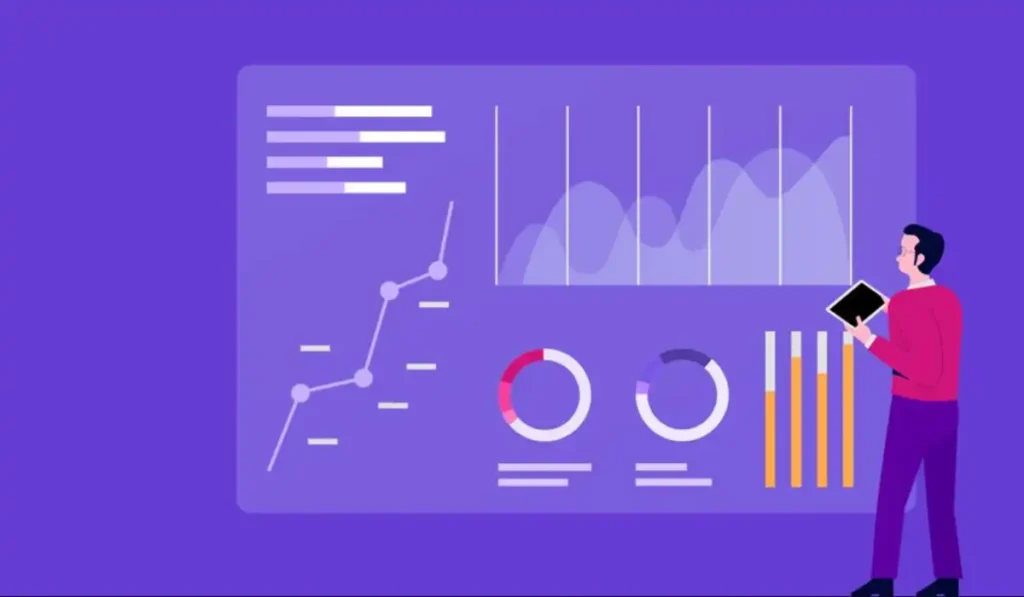
Creative Workshops and Webinars
Provide online workshops or webinars where attendees can pick up new techniques or create projects centered around the theme of your business.
- How to Implement: Arrange and publicize workshops that complement the specialization of your brand. When hosting, make use of tools like Zoom or Microsoft Teams and offer engaging content and activities.
- Benefits: Benefits include educating consumers, establishing brand authority, and meaningfully involving participants.
Social Media Challenges
Post social media challenges that motivate people to produce and distribute content centered around a certain hashtag or theme.
- How to Put It Into Practice: Establish a challenge, ask interesting questions, and share it on all of your social media platforms. To encourage more involvement, recognize and honor the top submissions.
- Benefits: Boosts user-generated content production, broadens brand reach, and increases social media engagement.
Surprise Giveaways and Flash Sales
To generate excitement and encourage instant interaction, plan surprise giveaways or flash sales.

- How to Put It Into Practice: Use email newsletters or social media to promote prizes and flash deals. Make sure there is a clear and easy way to participate.
- Benefits: Creates excitement, encourages prompt action, and draws in new clients.
Augmented Reality (AR) Experiences
How to Implement: Utilize AR technology to create interactive experiences like virtual product try-ons or immersive brand storytelling.
- Description: Create AR experiences that let people interact with your items or brand in a virtual environment. Development can be aided by platforms like as ARKit and ARCore.
- Benefits: Draws in tech-savvy clients, offers a creative and captivating experience, and increases product awareness.
Implementing targeted strategies for improving conversion involves optimizing your,
- Sales funnel,
- Leveraging personalized marketing,
- Utilizing data-driven insights to improve user experience and
- Drive higher rates of successful transactions.
Strategies for Small Business Customer Engagement and Interaction
Effective client interaction techniques are essential for small businesses to use if they want to grow and succeed. Businesses may greatly increase their interaction rates and brand visibility by putting in place proper,
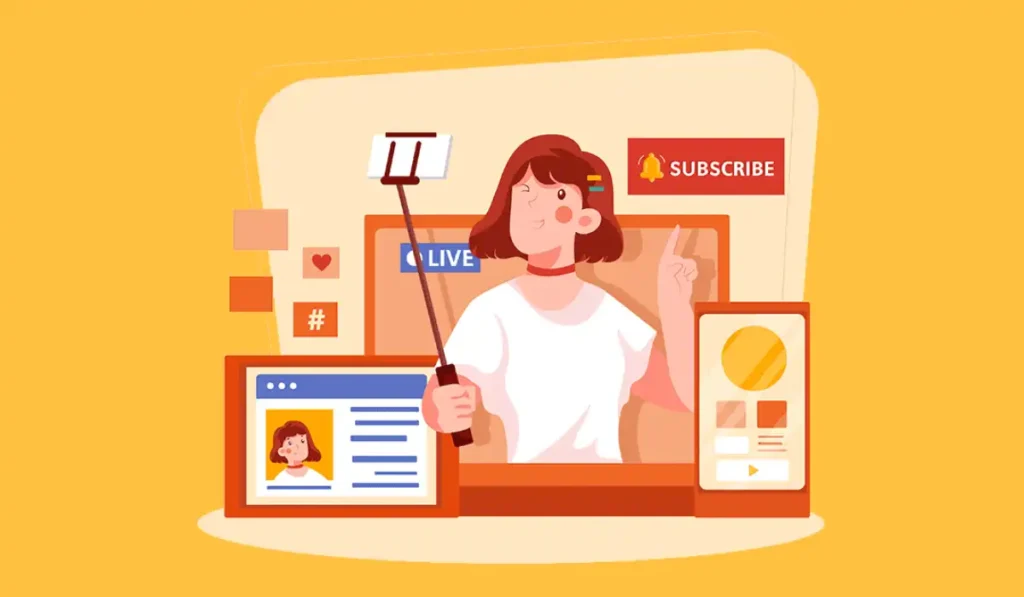
- Email campaigns,
- Organizing neighborhood events, and
- Continuing to actively participate on social media.
| Engagement Strategy | Description | Expected Output (%) (approximately) |
| Personalized Email Campaigns | Send targeted and relevant emails based on customer behavior and preferences. | 30% increase in open rates, 25% boost in conversions |
| Local Community Events | Host or participate in local events to connect with customers in person. | 40% increase in local brand awareness, 35% boost in customer loyalty |
| Social Media Engagement | Actively engage with customers on social media through posts, comments, and direct messages. | 25% increase in social media interactions, 20% growth in followers |
| Loyalty Programs | Implement a rewards program to incentivize repeat purchases and customer retention. | 50% increase in repeat purchases, 45% improvement in customer retention |
| Customer Feedback Surveys | Regularly collect and analyze customer feedback to improve products and services. | 15% increase in customer satisfaction, 10% improvement in service quality |
Creating loyalty programs and conducting frequent customer feedback surveys improve client retention and satisfaction even more.
These tactics, bolstered by corresponding analytical results, show how concentrated efforts can result in notable enhancements to consumer engagement and corporate performance.
FAQs
How can I measure customer engagement?
Keep an eye on important data like website traffic, social media interactions, customer satisfaction ratings, and frequency of purchases.
What are some low-cost customer engagement strategies?
Make use of social media, email marketing, tailored content, and top-notch customer support.
How can I improve customer engagement through social media?
Post worthwhile content frequently, answer comments right away, hold competitions, and make use of pertinent hashtags.
What are the 3 C’s of customer engagement?
Confidence, connection, and convenience.
What are the 4 P’s of engagement?
Personalization, proactivity, promptness, and people.
How to build an engagement plan?
Establish objectives, determine a target market, select channels, plan out your material, assign KPIs, and evaluate your results.

